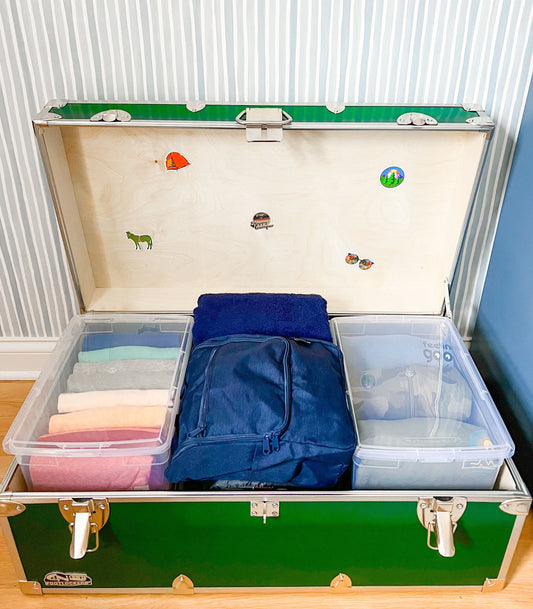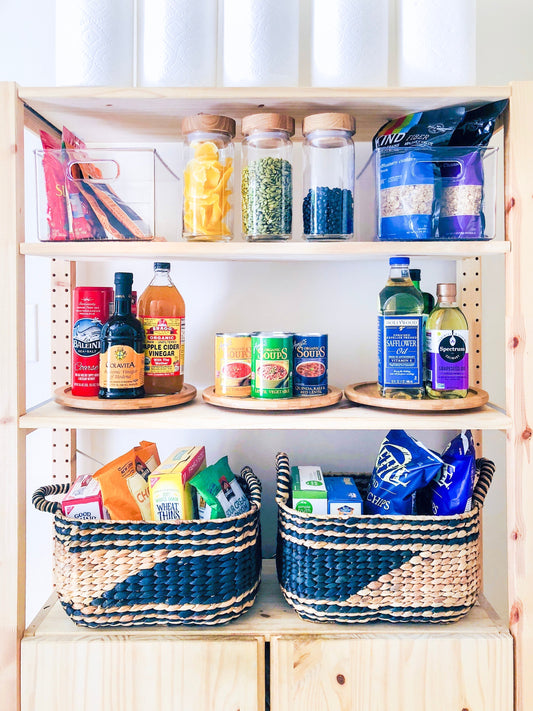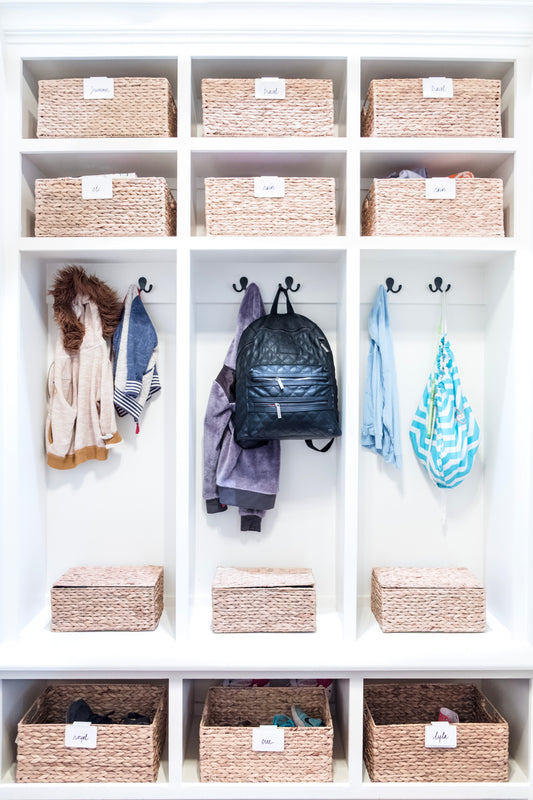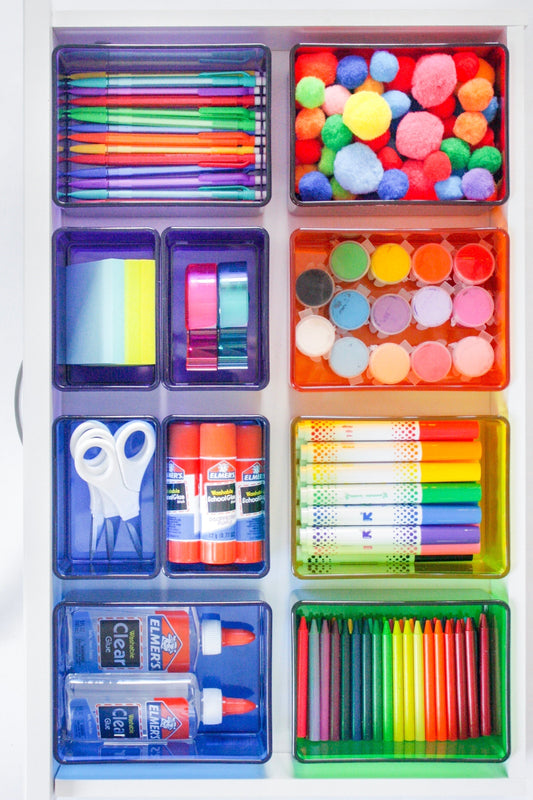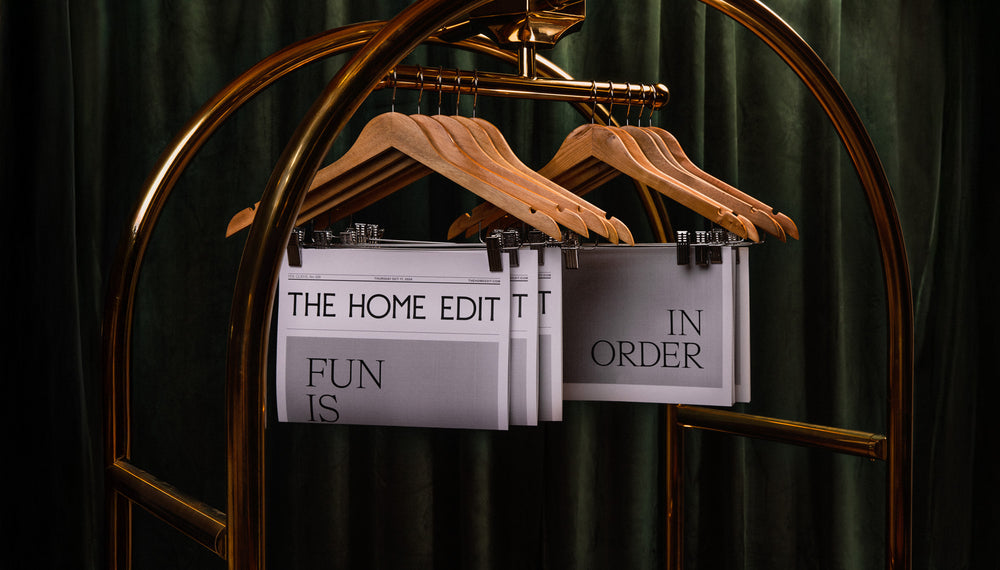Imagine walking into your favorite boutique in the heat of summer to snag a new sundress and cute sandals for the beach, only to find nothing but bulky sweaters and snow boots. It wouldn’t make a lot of sense, right? Think of your closet in the same way. The more you rotate your seasonal inventory to match your current needs, the easier your life will be.
Read on for our do’s and don’ts of storing your off-season clothing and creating the closet rotation system that works for you.
*This article contains affiliate links, which means we may earn a commission if you buy something.
Step 1: Edit
Do: Purge Prior
Before you put anything in storage, you must take stock of your current off-season inventory. Editing will give you the opportunity to reevaluate your wardrobe to clear space and start fresh. Here’s a list of items to evict from your closet immediately:
- Anything that doesn’t fit you or is uncomfortable
- Anything you haven’t worn in a year
- Anything stained or damaged that you don’t plan to fix
- Anything someone else would get use out of
From there, determine what should be tossed, donated, or sold. If you finish editing and your closet still looks cramped, go ahead and take a pass through every item, not just the off-season ones you are moving to storage. No matter what square footage you are working with, you always want to make sure that your space is no more than 80% full at any given time. That 20% breathing room is the key to avoiding system overload and staying organized over time.
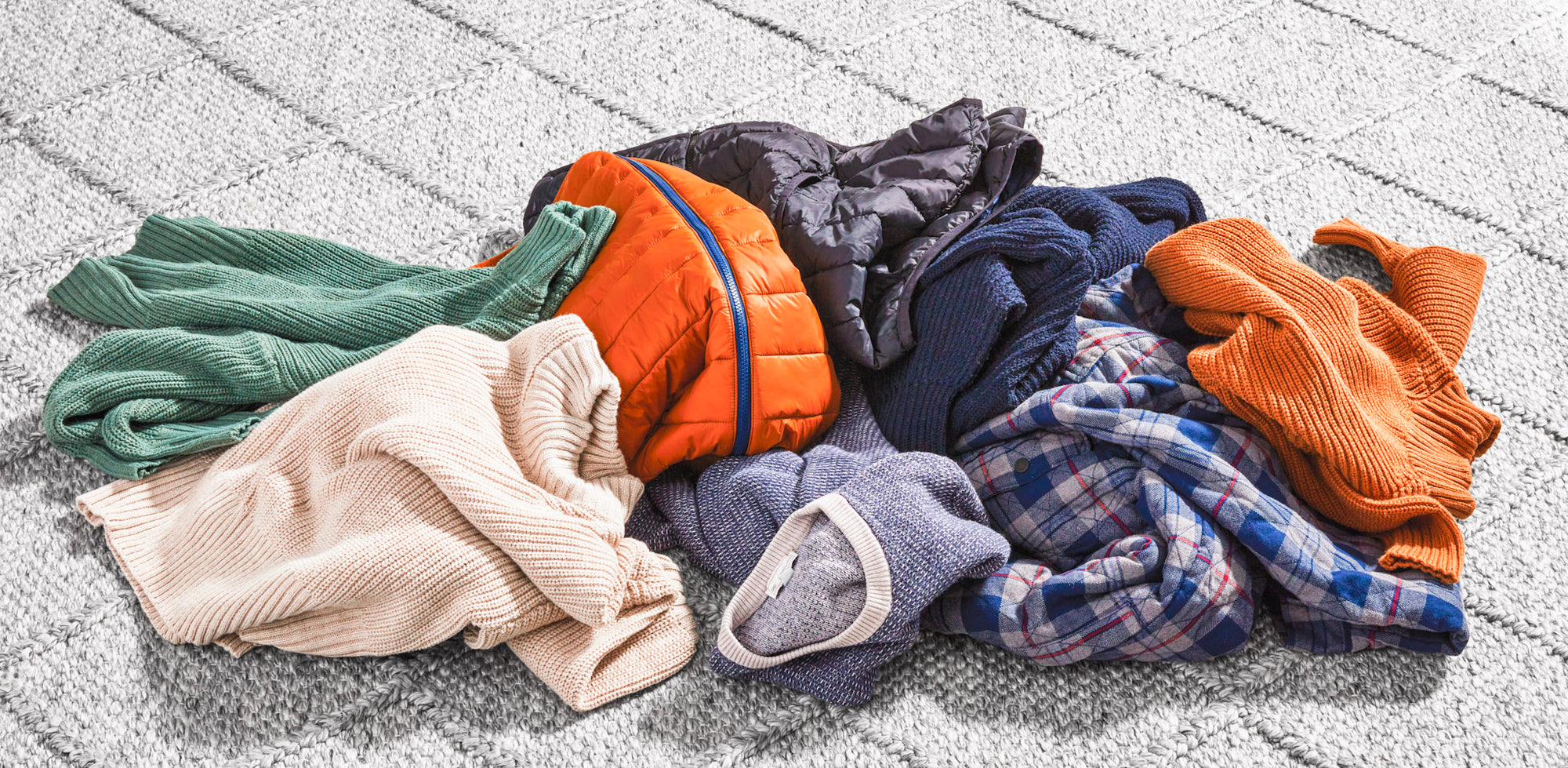
Don't: Make Piles Without A Plan
Whether it’s scheduling an appointment for a Salvation Army pickup or making a list of the people you want to give certain items to, knowing your exit strategy will decrease the likelihood that you’ll be driving around with donation bags in the back of your trunk a year from now.
Do: Plan For Unpredictable Weather
Depending on where you live, seasons aren’t so straight-forward. Just when you think you’re ready to put those rain boots to rest, a storm comes blowing through. We suggest leaving a one pair of boots, a coat, and a sweater in your closet, just in case.
Don't: Stop Moving
Once you get into an editing groove, don’t call it quits and say you’ll come back to it another time. Stopping and restarting is a big reason people tend to lose interest and confidence when tackling an organizing project. What will go a long way is making sure you are giving yourself enough time to parse through everything. As long as you get through the editing process in one session, you can always come back to the organization piece later.
Step 2: Contain
Do: Store In Good Condition
While you may be tempted to toss everything into storage as is, think about future you. Will future you want to deal with sewing a button back on? Spot cleaning a stain that’s now been settling for months? No, future you will want unpack and wear immediately.
Taking care of business beforehand will not only only save you stress in the long run, but also protect the quality of your clothing.
Don’t: Waste Valuable Real Estate
Anything at eye level is the closet equivalent of beachfront property. The items you wear the most should be visible and easy to access.
As for the off-season ones? They can hang out top shelves, under beds, or in other areas of the home, such as the guest closet, in the meantime. Whatever you choose, it should be someplace cool and dry to prevent mold and mildew.
To be extra safe, drop in one of these dehumidifier packs before closing the lid to absorb any moisture.
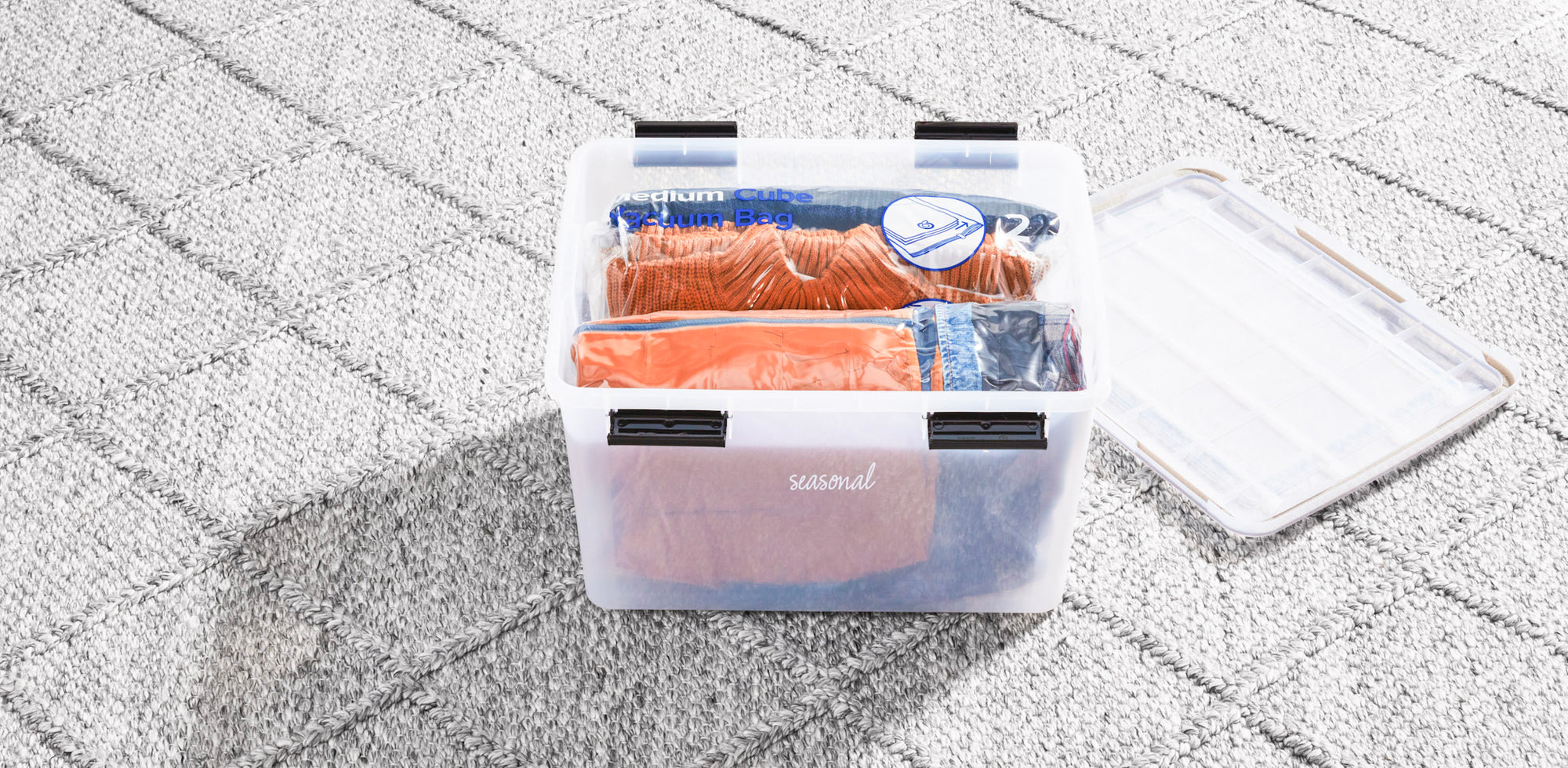
Do: Prioritize Protection
Sure, a container that saves a ton of space is ideal, but the top priority when choosing long-term storage should be protecting your clothing. Since all fabrics or materials require a different level of care, choosing the right container comes down to the item and how it should be stored. From there, you can decide on the best option for your space.
Clothing:
- Anything “puffy” or “fluffy”: Hang in a protective garment bag and store in the back of your closet. You want to avoid folding, or you risk your favorite down coat from looking permanently sad and smushed.
- Cotton: Condense your folded stacks in vacuum sealed bags and store in a clear weathertight bin.
- Silk/Cashmere/Wool: These are all delicate materials that require more air circulation, so opt for a canvas or linen storage bin rather than plastic. For extra protection, fold each item and wrap in acid-free tissue paper to preserve color and protect from dust.
- Leather: Before storing, stuff the inside of your leather jacket with acid-free paper, including the sleeves and pockets, to create a barrier for dust and moisture and helps the material keep it’s shape. If there are zippers, wrap those as well to avoid any scuffing. Place in a storage bin, folded flat to avoid creasing.









